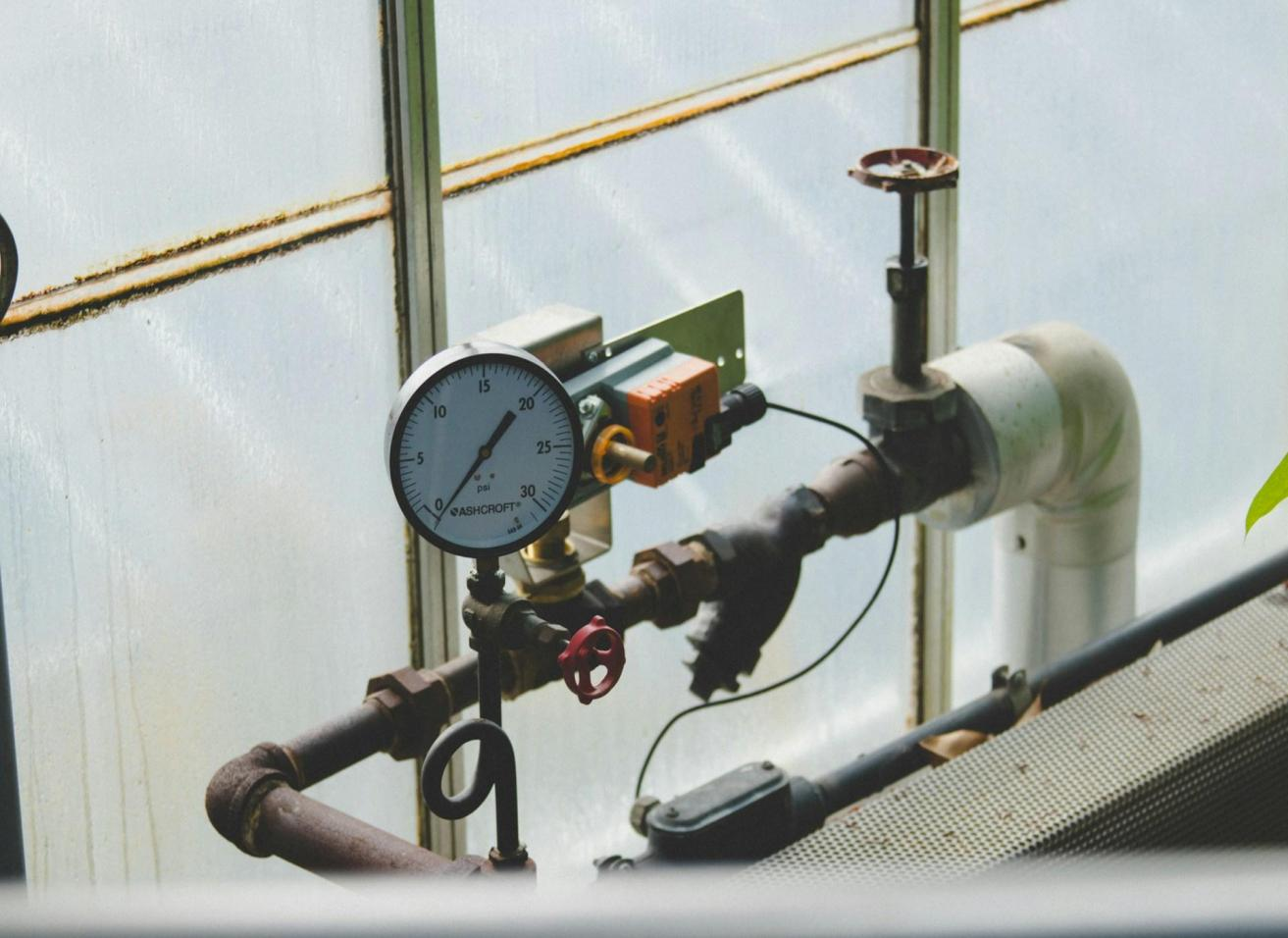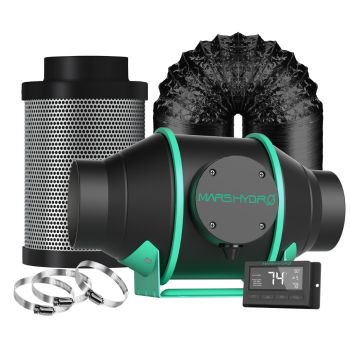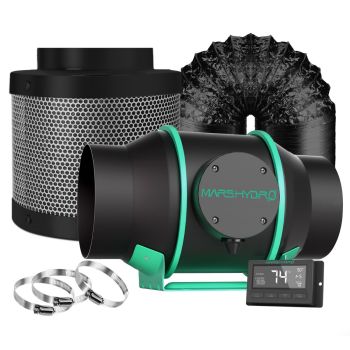
Let's talk about something that can be a real buzzkill (pun intended) when growing your own plants at home – the smell. Whether you're in the UK or Germany, let's face it, discretion is key.
Nosy neighbors, unexpected guests, or even legal concerns – trust me, you don't want the aroma of your grow tent wafting through your home or neighborhood. But don't worry, I've got your back!
I've made my fair share of mistakes on my growing journey, and I'm here to spill the beans on the most common blunders that can turn your discreet grow into a fragrant fiasco. Let's dive in and ensure your grow operation stays under the radar.
Underestimating the Power of the Smell
Okay, first things first, let's not kid ourselves – some plants, especially when they're in full bloom, can pack a serious olfactory punch. It's like they're trying to announce their presence to the world.
What this means for you is that even the tiniest gap in your grow tent setup can become a major escape route for these potent odors. It's like trying to contain a balloon constantly expanding – sooner or later, it'll find a way out.
Think of a loose zipper on your tent, a poorly sealed exhaust duct, or even microscopic holes in your carbon filter. These seemingly minor flaws can be the Achilles' heel of your smell-proofing efforts.
I once had a setup where I was so sure everything was airtight. But then, one day, I walked past my grow tent and caught a whiff of that unmistakable skunky aroma. Turns out, there was a tiny gap where the duct tape had come loose on my exhaust ducting. Lesson learned: never underestimate the power of the smell!
Improper Carbon Filter Setup
Alright, so we've established that your plants can be pretty fragrant. Now, let's talk about the superhero of smell control: the carbon filter.
These filters are like odor-eating machines, designed to capture and neutralize those pesky terpenes before they have a chance to escape your grow tent.
But here's the thing – even the most powerful carbon filter won't work its magic if it's not set up properly. It's like having a sports car with a flat tire – it's not going anywhere.
Here are some of the most common carbon filter faux pas:
- Undersized Filter:Using a filter that's too small for your grow tent and the number of plants you're growing is like trying to fit into a pair of jeans two sizes too small – uncomfortable and not very effective. Make sure your filter is rated for the size of your space and the odor-producing potential of your plants.
- Incorrect Airflow Direction:This one's a classic rookie mistake. The air should flow through the filter before it exits your grow tent. If you have it set up the wrong way, the filter won't have a chance to do its job. It's like trying to breathe through a mask that's on backward – not very productive.
- Old or Saturated Filter:Carbon filters don't last forever. Over time, they become saturated with terpenes and lose their effectiveness. It's like trying to clean up a spill with a dirty sponge – it'll just make things worse. So, replace your filter regularly, especially if you notice that familiar smell starting to creep back in.
Neglecting Negative Pressure

Let's talk about something that sounds a bit technical but is actually super important for keeping those smells locked down: negative pressure.
Think of your grow tent as a submarine. You want to maintain a slightly lower air pressure inside the tent than outside.
Why? Because this creates a vacuum effect, pulling air in through your intake vents and preventing those telltale odors from escaping.
But here's where things can go wrong:
- Overpowered Intake Fans:If your intake fan is too strong, it can overpower your exhaust fan, creating positive pressure instead of negative pressure. It's like trying to blow up a balloon that's already full – the air has nowhere to go but out.
- Insufficient Exhaust Capacity:On the flip side, if your exhaust fan isn't powerful enough to move all the air out of your tent, you'll end up with stagnant air and a buildup of odors. It's like trying to ventilate a stuffy room with a tiny fan – not very effective.
- Obstructed Airflow Paths:Even with the right fans, if your airflow is blocked by poorly placed equipment or kinked ducting, you won't achieve the negative pressure you need. It's like trying to drink a milkshake through a clogged straw – frustrating and not very satisfying.
Maintaining negative pressure is like having a secret weapon in your smell-proofing arsenal. It's that extra layer of security that ensures those potent aromas stay where they belong – inside your grow tent.
Ignoring Additional Smell Control Measures
Now, carbon filters and negative pressure are the heavy hitters in your odor control lineup, but they're not the only tools in the toolbox. Think of them as your starting lineup, but you can always bring in some extra players to seal the deal.
Here are a few MVPs (Most Valuable Products) you can add to your smell-proofing game plan:
- Odor-Absorbing Gels or Neutralizers:These little guys are like odor magnets, drawing in those smelly molecules and neutralizing them. They're great for placing around your grow tent or even inside your home to create an extra layer of protection.
- Ona Blocks:These handy little blocks release a pleasant fragrance that helps mask lingering odors. They're like air fresheners on steroids, specifically designed for grow room environments. Just be careful not to overdo it – you don't want your home smelling like a perfume factory!
- Low Humidity:Did you know that high humidity can actually intensify some odors? It's true! So, keeping the humidity levels in your grow tent on the lower side (around 40-50% during flowering) can help keep those smells from becoming overpowering. It's like turning down the volume on a loud song – it's still there, but it's not as overwhelming.
Remember, smell-proofing is all about layers. By combining these additional measures with a solid carbon filter setup and negative pressure, you'll be well on your way to a discreet and odor-free grow operation.
Conclusion
Phew, we've covered a lot of ground here. We've talked about the power of the smell, the importance of proper carbon filter setup, the magic of negative pressure, and the added benefits of additional smell control measures. It might seem like a lot to take in but trust me, it's worth it.
Remember, a discreet grow operation isn't just about keeping your plants hidden; it's also about controlling those telltale odors. By avoiding these common mistakes and implementing the strategies we've discussed, you can create a grow environment that's both productive and discreet.
Ready to make your grow tent as smell-proof as possible? Check out Mars Hydro's range of high-quality ventilation products, such as clip-on fans and carbon filters. These tools are essential for maintaining proper airflow, filtering out odors, and creating a negative-pressure environment.
With Mars Hydro, you'll have everything you need to enjoy your homegrown harvest without worrying about unwanted attention or those dreaded knocks on the door.
So, take a deep breath (of fresh, non-scented air, of course), roll up your sleeves, and head over to Mars Hydro to equip your grow tent with the best smell control solutions on the market.










